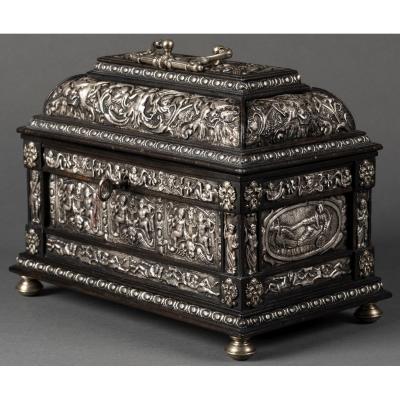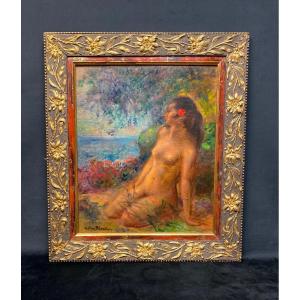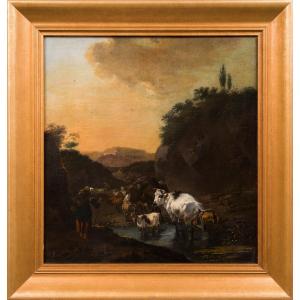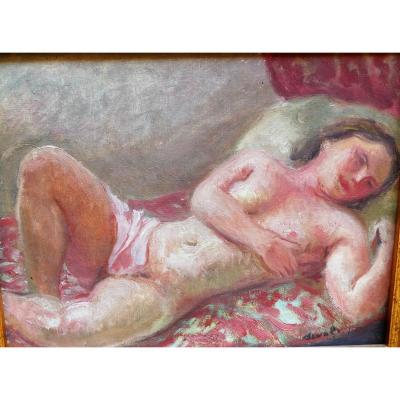In a feigned oval, a beautiful young woman, leaning over her work, is about to strike a hammer blow on the chisel she holds firmly in her left hand. While the life-size sculpture she is shaping is lying in front of her, a statuette appears in the shadows in the background. The gesture thus captured on the spot in the light of a studio, gives our painting the impression of a snapshot illustrating the qualities that a sculptor must possess: strength and skill. In this first part of the 18th century, the allegorical register often associates sculpture and painting. But our painter has chosen to represent only one of these arts. Thus, his composition can be seen as an illustration of the debate on the Paragone that began during the Renaissance and continued in the salons until the 18th century. Intellectual debate aimed at hierarchizing the arts, mainly painting and sculpture, by arguing on the idea of the imitation of nature. By "enclosing" this sculptress in his composition, did our painter want to defend the idea that painting was a superior art to sculpture? How many sculptures represent a painter at work? Perhaps he simply wanted to bring them together to affirm the idea of equality or even complementarity of the two arts?
We have chosen to present this allegorical painting in a rare Lombard frame from the beginning of the 18th century in carved and mecca gilded wood.
Dimensions: 61 x 73 cm - 76 x 88 cm with the frame
Sold with invoice and certificate of expertise
Biography: Louis de Boullogne II or the Younger (Paris 1654 – Id. 1733) is the son of Louis Boullogne I and the brother of Bon Boullogne. Barely 18 years old, he was awarded the Grand Prix de peinture de l'Académie. Four years later, he undertook a journey to Italy and went to Rome where he copied many of Raphael's works. After stopping in Venice and crossing Lombardy, he returned to Paris in 1680 where he was made a member of the Academy. His reception painting, Augustus closing the temple of Janus, made an impression and brought him immediate success. He received commissions from all sides and his paintings adorned the walls of the Château de Versailles, many churches in Paris, but also the Château de Marly and that of Meudon. He is also responsible for two mays of Notre-Dame. In 1723, he was appointed rector of the Academy, and in 1724, first painter to the king, with letters of nobility.
Bibliography:
- MILOVANOVIC Nicolas, Catalogue of 17th century French paintings from the Louvre Museum, Gallimard Louvre editions, 2021
- BAJOU Thierry, Painting at Versailles 17th century, Buchet / Chastel Pierre Zech publisher, 1998
- BREME, Dominique, Allegoria, the keys to baroque symbolism, Silvana Editoriale, 2024
- GUICHARNAUD Hélène, Louis de Boullogne, Cinq Continents, 2011






















 Le Magazine de PROANTIC
Le Magazine de PROANTIC TRÉSORS Magazine
TRÉSORS Magazine Rivista Artiquariato
Rivista Artiquariato
